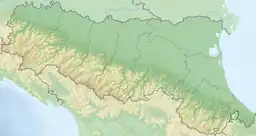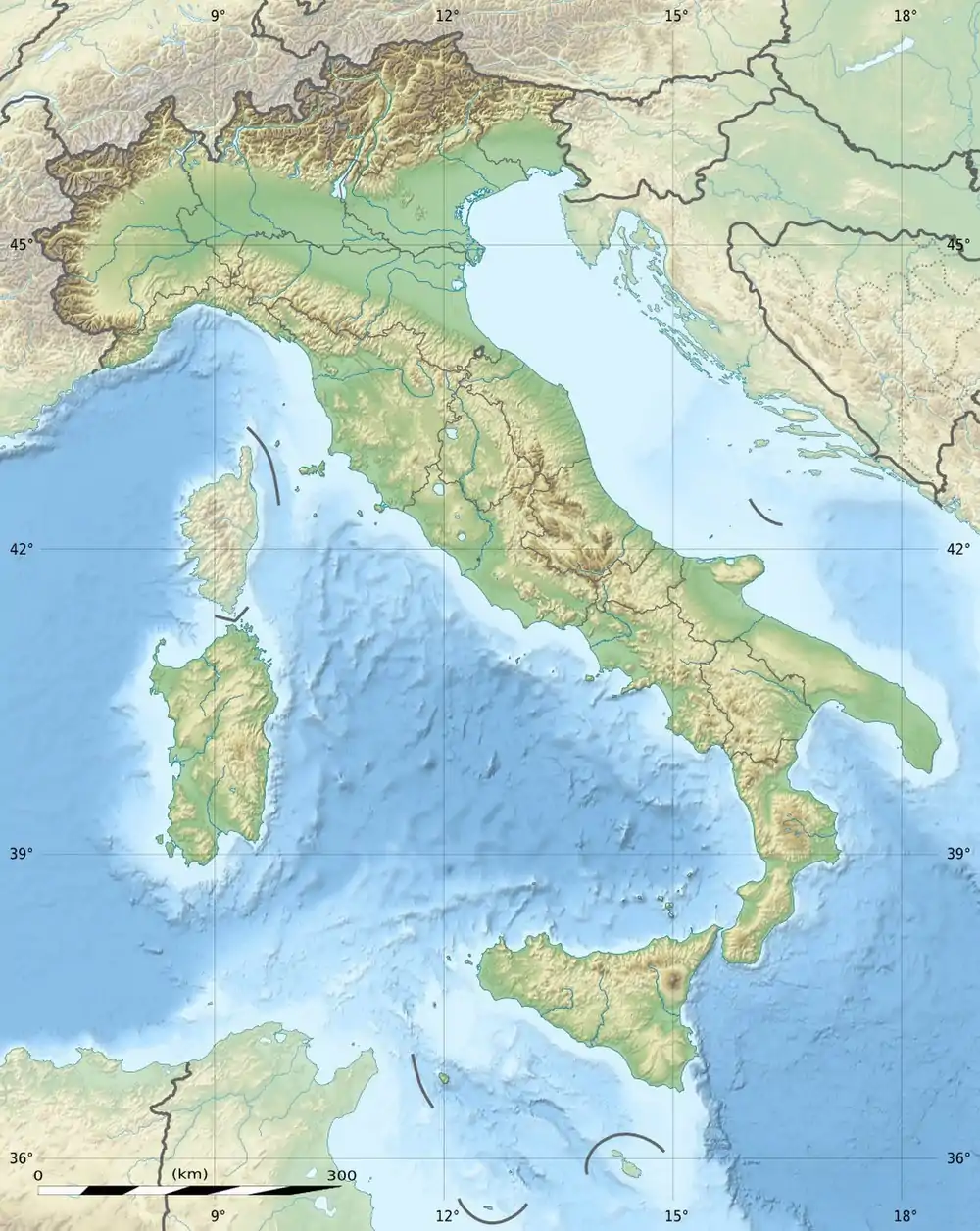| UNESCO World Heritage Site | |
|---|---|
_-_Exterior.jpg.webp) | |
| Location | Ravenna, Italy |
| Part of | Early Christian Monuments of Ravenna |
| Criteria | Cultural: i, ii, iii, iv |
| Reference | 788-007 |
| Inscription | 1996 (20th Session) |
| Area | 0.014 ha |
| Buffer zone | 21.6 ha |
| Coordinates | 44°25′30″N 12°12′33″E / 44.42500°N 12.20917°E |
 Location of the mausoleum  Mausoleum of Theodoric (Italy) | |
The Mausoleum of Theodoric (Italian: Mausoleo di Teodorico) is an ancient monument just outside Ravenna, Italy. It was built in AD 520 by Theodoric the Great, king of the Ostrogoths, as his future tomb.[1]
Description
The mausoleum's current structure consists of two decagonal orders, one above the other made of Istrian stone, sourced from a quarry approximately 400 kilometres (249 mi) away by land journey. The mausoleum's roof consists of a single carved stone 10 metres (33 ft) in diameter weighing 230 tonnes. A niche leads down to a room that was probably a chapel for funeral liturgies; an external stair leads to the upper floor. Located in the centre of the upper floor is a fragmentary ancient Roman porphyry tub, likely from a bath complex, in which Theodoric was buried. His remains were removed during Byzantine rule, when the mausoleum was turned into a Christian oratory. In the late 19th century, silting from a nearby rivulet that had partly submerged the mausoleum was drained and excavated.
Recognition
It was inscribed with seven other "Early Christian Monuments and Mosaics of Ravenna" buildings as one of the UNESCO World Heritage Sites in 1996. According to the ICOMOS evaluation, "the significance of the mausoleum lies in its Gothic style and decoration, which owe nothing to Roman or Byzantine art, although it makes use of the Roman stone construction technique of opus quadratum, which had been abandoned four centuries before" and in the fact that "it is the only surviving example of a tomb of a king of this period."[2]
 Inside lower level
Inside lower level Inside top level
Inside top level Inside top level with cracked roof stone
Inside top level with cracked roof stone Inside top level
Inside top level Porphyry tub used by Theodoric as sarcophagus
Porphyry tub used by Theodoric as sarcophagus
See also
References
- ↑ Bean, Rachel; Bruno, Stefano; Doe, Helen (2010). Italy, Malta, and San Marino. Marshall Cavendish. p. 753.
- ↑ WORLD HERITAGE LIST Ravenna No 788
Further reading
- Weitzmann, Kurt, ed., Age of spirituality: late antique and early Christian art, third to seventh century, no. 109, 1979, Metropolitan Museum of Art, New York, ISBN 9780870991790; full text available online from The Metropolitan Museum of Art Libraries
External links
- Ravenna Turismo Timetable and information for visiting the mausoleum and other Ravenna monuments, in Italian, English and German.
- Original text adopted from . No copyright notice has been found on the site so far. Please remove the text and the photo if you find one.
- Revolving image of the upper floor. The dark color tub appears at the lower corner.
- Download a free paper model of Theoderic's Mausoleum (www.papermodel.cz)
